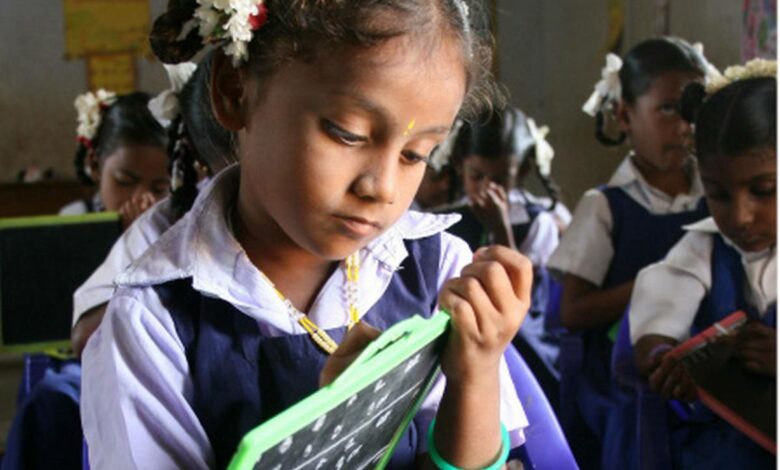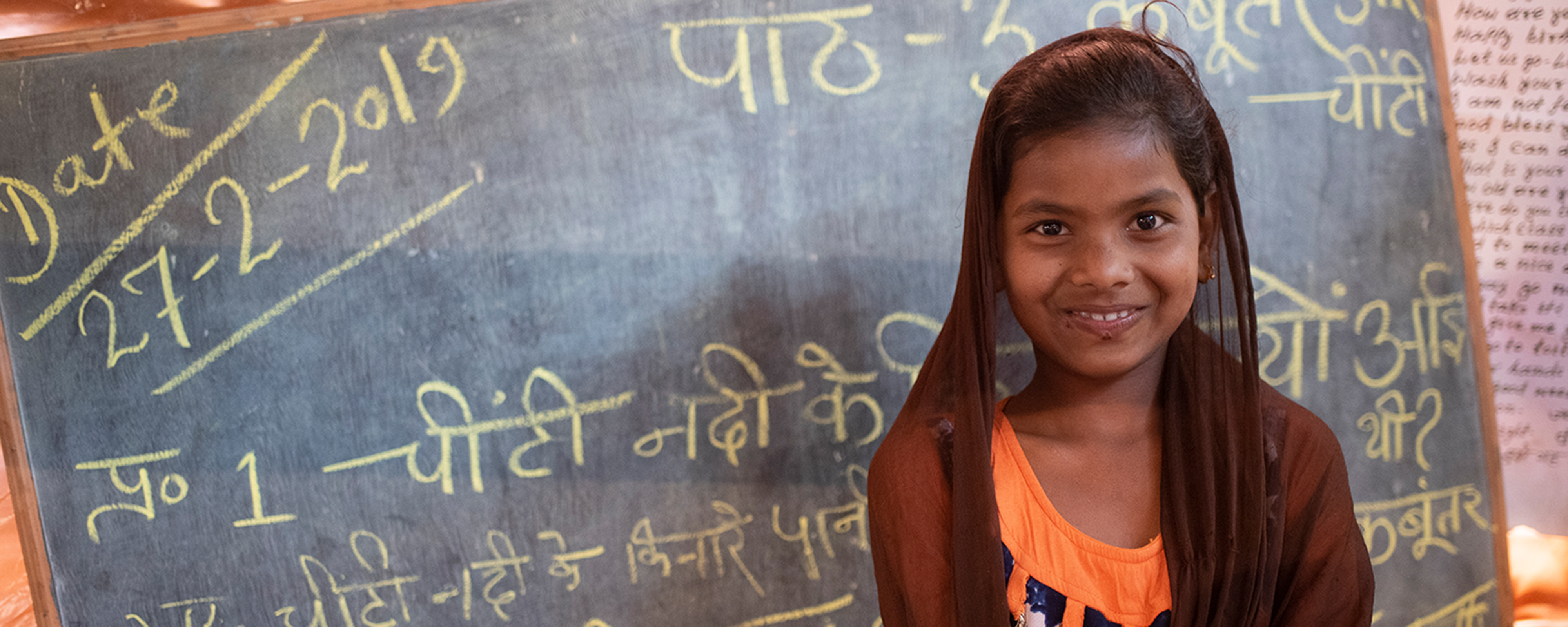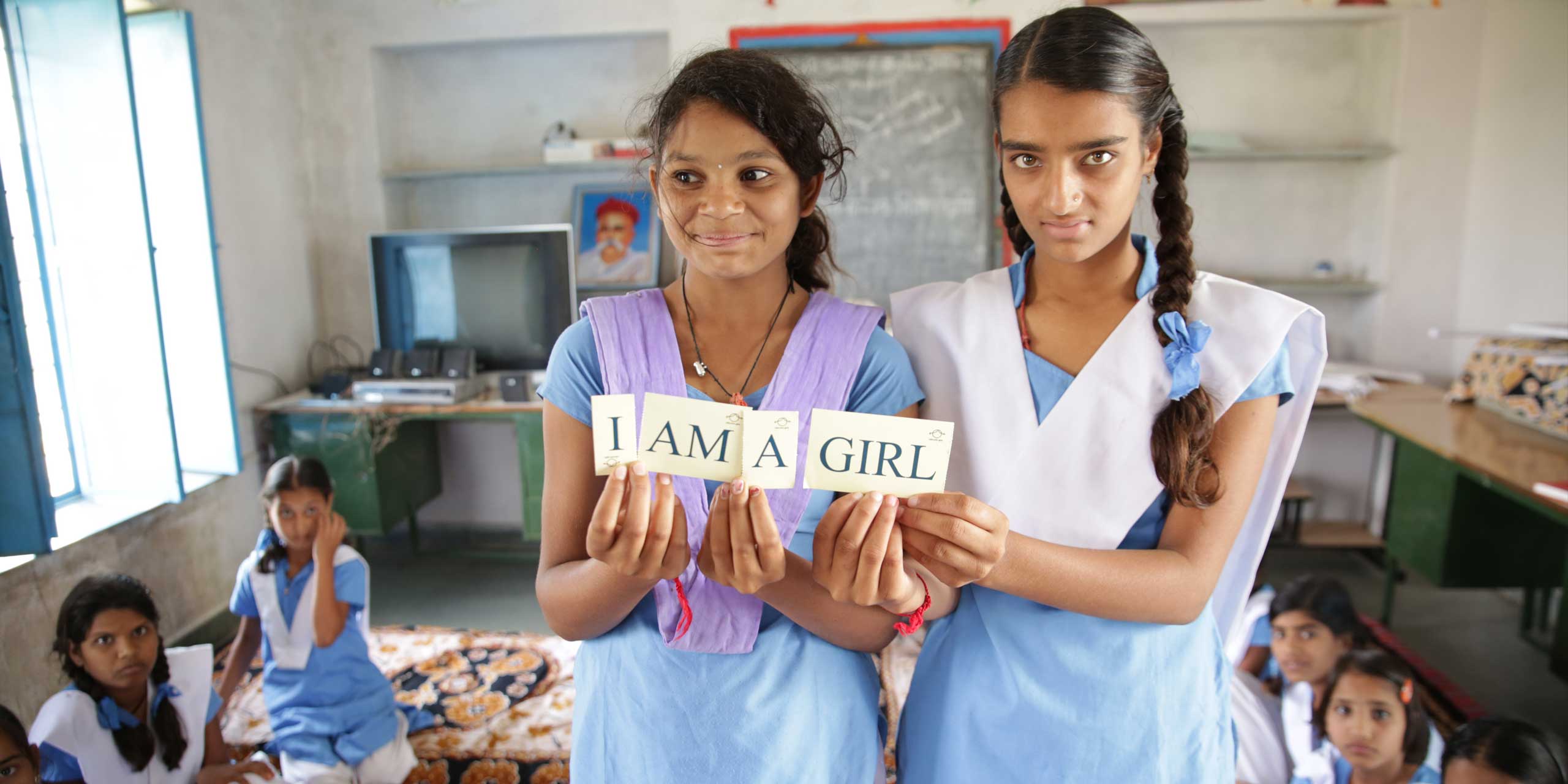Ensuring girls’ education in the 22nd century in India

Ensuring girls’ education in the 22nd century in India
The number of girls attending school is still low in many parts of our country, resulting in the lack of education of a substantial population segment. We have been enriched by initiatives such as the Sarva Shiksha Abhiyan and the CBSE scholarship program for single girls in our society.
There is discrimination against girls in many countries, including India. Consequently, girls are denied education due to this discrimination, whether they are children or when they reach adult age. Girls in rural areas of India are often kept from obtaining a formal education because they leave the family home after marriage. They are not seen as an economic investment by their parents. Boys’ education is given maximum importance since they are considered to be the breadwinners.
There are many reasons why young girls do not study, including financial difficulties at home, domestic duties and lack of aspirations. The importance of girls’ education is critical as they also contribute significantly to the nation’s economy and society. Females also take care of most of the household needs. They could improve their own lives and the lives of others with proper education. The elimination of child labour would be more straightforward if girls with schooling could earn a living.
In addition to family planning and sanitation, education teaches girls about health and sanitation. Therefore, infant mortality rates will be low, and fewer deaths of women during pregnancy.
Thanks to government policies like Sarva Shiksha Abhiyaan, the CBSE scholarship for single girls and the right to free education, our society has benefited immensely. The country still has hope for improvement.
About 34 million adolescents are not in school. There are 796 million illiterate women worldwide, another shocking finding. As per the 2011 census, 82.14 per cent of Indian males are literate, while only 65.46 per cent of Indian females are. It is clear from all these statistics that women face discrimination in today’s society.
Men in India have a literacy rate of 82.14%, while women have a literacy rate of only 65.46%, according to the 2011 census. In today’s world, women face a lot of discrimination, and these statistics demonstrate how bad things are for women. Neither men nor women should underestimate the importance of education. Some believe that girls are burdens on their parents. Girls are thought of as legal heirs of the family only after being raised, married, and sent to another house, whereas boys are considered heirs first.
In their old age, they act as guardians for their parents. Investing in a boy’s education is considered more beneficial than investing in the education of a girl since they will be moving out of the home. Some people believe women are sent to Earth solely for cooking, cleaning, and giving birth.
This thinking results in girls suffering and being ignored. It has gotten so bad that some girls are being killed in the womb before delivery, and if they have already given birth, the parents reject their offspring. Also, some are being murdered after childbirth.
India places a great deal of importance on marriage, so this is a problem. Indians believe that women should be confined to the four walls of their husband’s house as their ultimate home. Unlike a girl’s education, people are less concerned about spending a lot on a wedding. Therefore, all girls’ dreams will have to be forsaken.
This situation is not the fault of one person but the fault of the entire society. Women are not given the same importance as boys regarding education, and girls have consistently proven themselves when given a chance to prove their abilities.
Globally, girls are impacted by education. The purpose of education is to increase our knowledge to become stronger mentally, socially, and intellectually. Education gives girls confidence, and girls with educational backgrounds can make independent decisions.
Their families can be taken care of while they earn for themselves. Their independence allows them to live independently without dependence on men. They will contribute to their husband’s financial well-being after the wedding. Educate and transmit values to their children by taking care of them. Educating a man is beneficial only for himself, but educating a woman is helpful for the entire family and nation.
The importance of educating girls in India

The skewed male-female ratio of 940 to 1000 is a witness that India remains far from achieving gender equality. Indian society often views girls as liabilities, burdens to pass down. The solid patriarchal influence throughout history has left a lot of girls suffering from gender discrimination, gender stereotypes, and being treated with inferiority due to gender inequality.
A woman often receives the short end of the stick no matter how talented and ambitious she is. Some girls are not sent to school because they are afraid of exploitation and abuse and are instead kept at home to be married off early. It remains true that this young girl is denied a quality education, access to quality healthcare, employment opportunities and equal rights even if she is not married off. Most girls are resigned to their fate, although a few manage to ‘escape’ from the shackles.
When half of our society is still discriminated against, how can we expect India to progress? The first step in finding solutions is understanding the fundamental difficulties girls face.
It is first and foremost a matter of survival.
It is illegal to determine the gender of a foetus or to perform a selective abortion on a fetus, yet this practice continues underground. Additionally, this negatively affects the mother’s health and safety, affecting the number of daughters born. As it is the woman who is blamed for the sex of the baby, consecutive pregnancy with the hope of a boy can be both physically and mentally draining. To help the girl child survive, more vigorous enforcement and monitoring of laws are needed and better awareness.
Getting a quality education is difficult.
The U-DISE 2015-16 shows that the dropout rate for girls in the elementary level is 4.10%, rising to 16.88% at the secondary level. The dropout rate for girls from vulnerable groups is substantially higher (19.05% for SC and 24.4% for ST groups) (U-DISE 2015-16). The girls retain 70.6% of their elementary education but drop to 55.5% in the secondary level (U-DISE 2016-17).
Teenage girls tend to become irregular in attending school or drop out in the first year of school as a result of outdated attitudes and safety concerns about girls’ education, the distance between home and school, the lack of affordable sanitary napkins, the lack of separate toilets in schools, and the lack of school infrastructure. India has only a third of girls who complete their schooling as per the age required (U-DISE 2016-17).
Child marriage
Eighty-nine per cent of the 12.15 million married Indian children are girls, and married girls outnumber married boys three to one. In 2011, there were approximately 3 million married children under 14. The majority of them are rural girls. Having a child married means a girl loses her childhood as she must take on adult responsibilities that she is not prepared for – be it managing households, having children, making decisions, etc. The situation hinders her schooling and puts young girls at risk of becoming pregnant at an early age, harming their health and nutrition.
- Violence and abuse/safety concerns
The girl child is a prime target and is usually the victim of domestic violence and abuse, which goes unreported more often than not. Because rural parents are concerned about their daughters’ safety, they hesitate to send them to school.
According to the National Crime Records Bureau, kidnapping, abduction, and sexual crimes committed against children are among the top two offences committed against them. Among all rape victims aged 18 or younger, 28 per cent were female, and 70 per cent of the children reported missing in 2018 were female.
- Inadequate school facilities
The lack of affordable sanitary napkins, inadequate school infrastructure, and extreme taboos cause several teenage girls of menstrual age to fall behind in school.
Why is the education of the girl child important?

Girls’ education can have a positive impact on lives in our country, but many people are not aware of this. People from across socio-economic strata think investing in girl children’s education is a waste of money, which is a sad state of affairs. Even more upsetting is their preference for spending on expenses associated with their daughters’ marriage or dowries instead of their children’s education. The importance of early education in society cannot be overstated.
An educated woman is a powerful woman. Besides making good decisions for herself, raising her family’s standard of living, increasing employment opportunities, and reforming society at large, she can also take on leadership roles. Thus, there is an urgent need for a paradigm shift in how Indian society views girls education. Girls must be loved and respected equally.
Through a variety of programs and schemes, the government has made persistent efforts to raise girls’ status in society and encourage their educational pursuits. They have led to an improvement in girls’ education to some degree, but there is still much more to be done when it comes to treating girls as equals to boys.
We need to pay attention to girls education. It is a global problem to be addressed. It is a fact of life that everyone needs education, and it is equally important for girls to obtain a good education. Our commitment and co-operation on this issue require our collective understanding.
The future of our family women must be taken into consideration most importantly. Our family should provide the little girls with the necessary and empowering education. It is also important that they finish their education rather than marry.
Due to a lack of finances, many people cannot educate their daughters. In India, the number of people with this problem is the highest. The problem is not complicated, and the easiest way to get rid of it is to provide a low-cost or free fundamental education. As a result, girls will have the essential education they need to live in this cruel world.
Education makes a positive impact on society for each girl in some way or another. Young men and women alike find her to be a source of inspiration. With her, the country will be better off. As an educated girl, she understands her responsibilities, and she works to help each individual seek government assistance.
Nowadays, girls and women make significant contributions to nearly every field of endeavour, including science, clinical, engineering, legislative, promotion, and social assistance. Girls’ education has made this possible.
Why a Girl Child does not receive Proper Education?
Several factors are contributing to the inadequate education of girls in our society.
- Disregarding the health and well-being of girls and their attitudes and practices.
- In particular, for girls, parents and guardians who are illiterate are unaware of the importance of education.
- Different types of financial constraints interfere with education.
- A 13-14-year-old has a variety of domestic duties and must earn money to support their family.
- Having a crisis at home, without parental support, or living in a densely populated neighbourhood with poor lighting, effectively inhibits learning.
- Peer pressure from friends who do not attend school discourages learning.
- Only traditional careers can be pursued due to the lack of educational requirements.
- Higher caste peers and teachers discriminate against lower caste peers and teachers.
Democracy is the rule of law in India. Equality, liberty, fraternity, and justice are the central tenets of democracy. The rights of all men are the same in a democratic system, irrespective of their birth.
This requires special protection for girls. It is not right to discriminate between girls and boys in education. Each one has the right to grow as an individual. Sadly, girls are not involved and are not retained in education at all stages, but the rate is higher at primary school.
Our country faces many serious problems when it comes to women’s education. Waste and stagnation are the top two problems, and girls are particularly impacted by education wastage due to various factors. At the primary level, efforts were made to provide primary education, especially for girls.
Our country has no new policy relating to primary education for girls of school-going age. Governments at all levels, at the centre and the state level, are working hard to achieve the goal. We haven’t yet solved this problem despite our numerous attempts.
Here is the total number of students enrolled in Orissa’s primary schools. The number of students enrolled in Orissa’s Primary Education (Class I to V) is estimated to be 46.46 lakhs (27.22 lakhs of boys and 19.24 lakhs of girls) based on information from the Directorate of Elementary Education. In the year 2000, 9.90 lakhs of students were enrolled in primary school (Class VI to VIII). Among them, boys numbered 6.17 lakhs and girls 3,78 lakhs.
Accordingly, the percentages of gross enrollment ratios at primary (class I to V), as well as upper primary (class VI to VIII) were reported to be respectively 102.6% (boys 124.0% and girls 29.6%) and 37% (boys 45.7% and girls 29.3%) in the year 2000. To interpret the status of enrollment of girl students at the primary level, it is necessary to consider these statistics.
The Wastage community is mainly made up of dropouts from school. Dropouts are students who withdraw prematurely before they complete the desired level of education. There are also different reasons why girls drop out. A significant barrier to reaching the goal of universalizing elementary education was the stagnation of girl students. Many girls failed to complete their primary education at different levels, and several girls were found to be stagnating in classes due to such failures.
As well as contributing to the non-achievement of the Universalization of Elementary Education goal, girl stagnation contributed to the education wastage. There is not just stagnation of girl students due to their failure that causes such wastage in education. A large number of female students drop out, resulting in stagnation.
Students usually leave the school during any stage of their programs before completing them. These actions end up wasting resources and stagnating education. The state and country must take significant steps forward to solve the non-retention and non-involvement of girl students in primary school to create an educated society. Despite achieving Universalization of Elementary Education, girls do not participate and are not retained. Problems like these are not uncommon.
The common causes are:
- Educational causes
- Social causes.
- Economic causes.
Several factors can be attributed to poor education, including inadequate infrastructure, poor quality of teaching, bad curricula, and difficulties with language. The same applies to social problems such as parental illiteracy, children’s disinterest in school, caste discrimination, and insufficient communication with their schools. Especially in tribal and rural areas, many community members are illiterate. Their understanding of education in a person’s life is lacking.
The majority of these parents neglect their children’s education and do not send them to school. Superstition, such as early marriage, is prevalent in many lower caste communities.
Their daughters are not sent to school, therefore. Additionally, there are differences in religious beliefs among the people. Because of these differences, not all children have the same chances to be educated.
In addition to the cases above, some general reasons might also account for the problem of non-involvement and non-retention of female students in elementary schools.
The results of studies conducted have revealed that girls residing in rural areas face grave problems regarding non-engagement and non-retention.
How can we ensure that girl children receive an education?

- Both the parents and community must realize the importance of education and are motivated to ensure their children, especially their daughters, go to school.
- The Education Policies should be amended to provide private candidates access to the National Capital Territory of Delhi’s examinations. The Indian Central Board of Secondary Education already specifies in its Bye-Laws that candidates who are bonafide residents of Delhi may appear in the Board’s Class X and Class XII Examinations as private candidates.
As part of initiatives for promoting girls’ education, the Affiliation Bye-Laws of the Board has been amended to provide that affiliated schools are required to waive all fees (including tuition fee and all other fees except meals and transportation fee) associated with students who are also the only child of their parents starting from class VI.
I would also appreciate schools giving a 50% concession to girls who are one of the only two daughters in a family. Furthermore, the school may also waive fees such as transportation and meals on its own.
- For the primary objective to be achieved, school staff must actively engage with target communities and adopt a flexible approach. The perception of women within a society must be changed to address caste and associated financial and empowerment issues.
- This cause should receive the full support of community leaders and existing groups.
- Through eliminating degrading and exploitative media and advertising images that feature girls and women. Models of behaviour and values presented in movies perpetuate inequality and inferiority.
- Providing literacy training and income generation opportunities to women.
- Contributing to income generation and food security through an increased role for women. In addition to planting crops, marketing products, and preserving surplus food.
- Mothers should be trained in teaching their daughters academic education and preventative health measures, such as administering Oral Rehydration Therapy and treating acute respiratory infections.
- Organizations like the United Nations and world-renowned charities contribute significantly to girls’ education.
Edited and published by Ashlyn Joy



